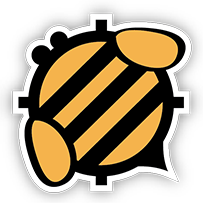Awesome

honeybee
Honeybee is a Python library to create, run and visualize the results of daylight (RADIANCE) and energy analysis (EnergyPlus/OpenStudio). The current version supports only Radiance integration. For energy simulation you may use the legacy honeybee for Grasshopper.
This repository includes the core library which is the base for Honeybee plugins. For plugin-specific questions and comments refer to honeybee-grasshopper or honeybee-dynamo repositories.
Check this repository for the legacy honeybee plugin for Grasshopper.
Installation
pip install lbt-honeybee==0.1.16
Tentative road map
- Basic Radiance Integration.
- Support annual daylight simulation - daylight coefficient method [Nov 2016].
- Support three-phase daylight simulation [Dec 2016].
- Support five-phase daylight simulation [Aug 2017].
- Fix PEP 8 issues [Dec 2017].
- Code documentation [Dec 2017].
- Provide cloud service support for daylight simulation [Under progress]
- Basic EnergyPlus integration [Nov 2019]
- Support basic HVAC modeling.
- Full OpenStudio integration.
API Documentation
Citing honeybee
For the daylighting library cite this presentation:
Sadeghipour Roudsari, Mostapha. Subramaniam, Sarith. 2016. Automating Radiance workflows with Python. The 15th Annual Radiance Workshop. Padua, Italy. Available at: https://www.radiance-online.org/community/workshops/2016-padua/presentations/213-SadeghipourSubramaniam-AutomatingWorkflows.pdf `
Examples
Here is a Python example that shows how to put a grid-based analysis together. For more examples check one of the plugins repository.
from honeybee_plus.room import Room
from honeybee_plus.radiance.material.glass import Glass
from honeybee_plus.radiance.sky.certainIlluminance import CertainIlluminanceLevel
from honeybee_plus.radiance.recipe.pointintime.gridbased import GridBased
# create a test room
room = Room(origin=(0, 0, 3.2), width=4.2, depth=6, height=3.2,
rotation_angle=45)
# add fenestration
# # add a window to the back wall
room.add_fenestration_surface(wall_name='back', width=2, height=2, sill_height=0.7)
# add another window with custom material. This time to the right wall
glass_60 = Glass.by_single_trans_value('tvis_0.6', 0.6)
room.add_fenestration_surface('right', 4, 1.5, 1.2, radiance_material=glass_60)
# run a grid-based analysis for this room
# generate the sky
sky = CertainIlluminanceLevel(illuminance_value=2000)
# generate grid of test points
analysis_grid = room.generate_test_points(grid_size=0.5, height=0.75)
# put the recipe together
rp = GridBased(sky=sky, analysis_grids=(analysis_grid,), simulation_type=0,
hb_objects=(room,))
# write simulation to folder
batch_file = rp.write(target_folder='.', project_name='room')
# run the simulation
rp.run(batch_file, debug=False)
# results - in this case it will be an analysis grid
result = rp.results()[0]
# print the values for each point
for value in result.combined_value_by_id():
print('illuminance value: %d lux' % value[0])


